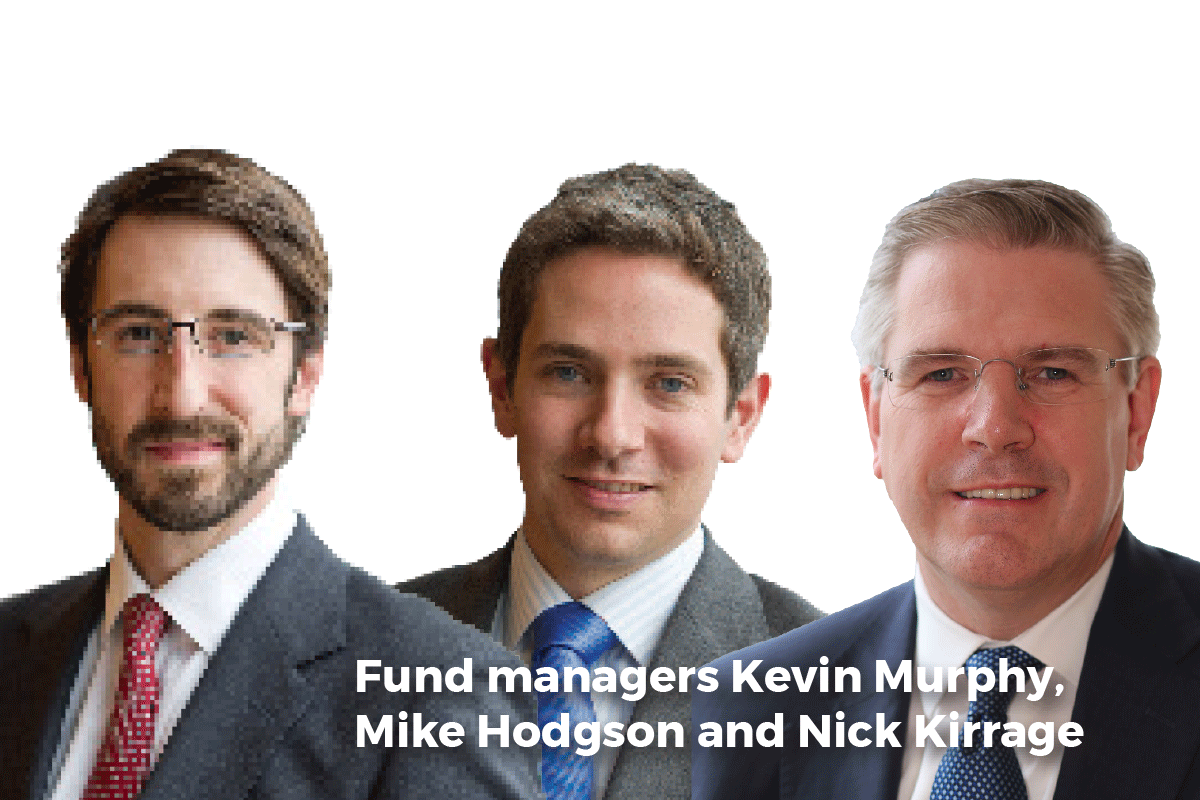Fund briefing: How to get the best income from investments
Getting steady investment returns is tricky, but not impossible
28th March 2020 14:49
by Rob Griffin from interactive investor
Getting steady investment returns is tricky, but not impossible

Unfortunately, generating income has been tricky for some time now. Rock-bottom interest rates have resulted in savers earning very little from banks and building societies. The best savings accounts only offer a modest 3%, and most pay considerably less.
Therefore, anyone wanting a higher income must consider some kind of investment. One option is buying shares in large, long-established businesses that distribute a proportion of their annual profits. These payments are known as dividends.
Some companies – such as banks and utility firms – have long track records of paying reliable dividends and have committed to doing so wherever possible, according to Sarah Coles, personal finance analyst at investment platform Hargreaves Lansdown.
“However, there are absolutely no guarantees that these dividends will continue,” she warns. “To protect yourself from the risk of companies cutting dividends, you need to diversify your investments across a wide range of businesses.”
If you have a large enough portfolio, you may be able to do this through buying a substantial number of single company shares, although Ms Coles maintains that you can achieve the same result, with hopefully less volatility, by choosing a fund.
“The best way is to invest in funds that are designed to produce income, and then draw what is known as the ‘natural yield’,” she explains. “Essentially, this means taking the income produced by your investments and leaving the original capital to continue growing.”
Traditionally, income investors have stuck to a mix of UK equity income, higher-yielding bonds and commercial property because blending them together helps to reduce volatility, according to Martin Bamford, a chartered financial planner at Informed Choice.
“These asset classes remain a popular choice for income investors, albeit with greater risks due to a lengthy period of monetary easing and low interest rates,” he says.
Diversification is the key to success, according to Adrian Lowcock, head of personal investing at Willis Owen, who suggests UK Equity Income and Global Equity Income, high-yield bonds, corporate bonds and property are all worthy of consideration.
“Each approach has its pros and cons, but the biggest issue for income seekers is the risk of their income from their investments suddenly dropping,” he says.
“This is the main reason an income portfolio of pure equities wouldn’t be appropriate.”
Your choice will be influenced by how much income you need and your appetite for risk, according to Patrick Connolly, a chartered financial planner at Chase de Vere, so you need to do your homework.
“It is still possible to achieve a higher level of income, but only by focusing on less secure fixed-interest assets, such as high-yield bonds and emerging market debt, and utilising equity income funds that take more risk,” he says.
Separately, during times when your overall portfolio is not generating enough income, Connolly suggests it is better to make up the difference by making capital withdrawals, rather than embracing higher-risk investments just because they are offering better rates of income.
“If you take more risk with your investments to get a higher initial income, there is a greater risk that you will suffer capital losses,” he adds. “As a result, your income may be unsustainable in the longer term.”
So which funds are interesting?
Darius McDermott, managing director of FundCalibre, suggests income investors are spoilt for choice.
“There are many income-producing assets, such as equities, bonds and property,” he says. “You can either invest directly in assets or in a fund or investment trust.”
Unfortunately, none are completely risk-free.
“Bonds are deemed to be less risky than equities, but even bonds will differ as government bonds are less risky than high-yield bonds,” he explains. “Usually, the more risk you are willing to take, the higher the income you can receive.”
McDermott likes a broad range of income funds, including M&G Corporate Bond, Baillie Gifford High Yield Bond fund, the Royal London UK Equity Income fund, Schroder European Alpha Income, and the Premier Pan European Property Share fund.
Whichever you choose, remember tax planning, adds Coles. “You can only earn £2,000 in dividends outside an Isa or pension before you start paying tax on them,” she says. “This makes it even more important for investors to hold as much of their income-producing funds within an Isa wrapper as possible – so that all their dividends are tax-free.”
Is income investing right for me?
Consider investing if…
• You need your investments to bolster your monthly income
• You want an extra revenue stream
• You are looking to supplement your pension
Schroder Income Maximiser

This fund’s objective is to provide dividends, as well as grow your original investment by investing in the stocks and shares of UK companies.
Although it aims to deliver an income of 7% a year, this is not guaranteed and could change depending on market conditions.
This actively managed portfolio invests at least 80% of its assets in shares of UK companies that are selected for their long term income and capital growth potential.
Patrick Connolly, a chartered financial planner at Chase de Vere, suggests this fund is an interesting option for those seeking a higher level of income.
“It is run as a typical equity income fund, except that some of the capital growth upside is sacrificed in order to boost the income,” he explains.
It does this by using so-called covered call options that enable the fund managers to effectively sell some of the future capital growth potential in order to boost the income.
“This means that the fund is likely to underperform when markets are rising but should do comparatively well when they are falling,” adds Connolly.
The fund’s 10 largest holdings include international giants such as Anglo American, BP, Tesco, Centrica and HSBC Holdings, according to its most recent fund fact sheet.
As far as sectors are concerned, it has 28.8% of assets in financials, followed by 23.7% in consumer services, and 11.5% in basic materials.
Other sectors, which each account for less than 10% of assets under management, include oil and gas, healthcare, utilities, telecommunications, technology, industrials and consumer goods.
Schroder Income Maximiser
Value of £100 invested in the fund over five years
Year | 2015 | 2016 | 2017 | 2018 | 2019 |
Fund movement in year | -6.91 | 19.94 | 7.76 | -2.43 | 8.67 |
Value of £100 | 95.51 | 114.56 | 123.44 | 120.44 | 130.89 |
*The 100 was invested on 01/01/14. Source: Moneywise.co.uk
Managers | Kevin Murphy, Mike Hodgson and Nick Kirrage |
Launch date | 4 November 2005 |
Fund size | £1.23 billion |
Minimum initial investment | 67£1,000 |
Minimum additional investment | £50 |
Initial charge/Ongoing charges | Depends if purchased via platform/1.66% |
Performance fee | 0% |
Annual management charge | 1.5% |
Contact details for retail investors | 020 7658 1000 |
This article was originally published in our sister magazine Moneywise, which ceased publication in August 2020.
These articles are provided for information purposes only. Occasionally, an opinion about whether to buy or sell a specific investment may be provided by third parties. The content is not intended to be a personal recommendation to buy or sell any financial instrument or product, or to adopt any investment strategy as it is not provided based on an assessment of your investing knowledge and experience, your financial situation or your investment objectives. The value of your investments, and the income derived from them, may go down as well as up. You may not get back all the money that you invest. The investments referred to in this article may not be suitable for all investors, and if in doubt, an investor should seek advice from a qualified investment adviser.
Full performance can be found on the company or index summary page on the interactive investor website. Simply click on the company's or index name highlighted in the article.